
Obtaining Trekking Permits in Nepal: A Guide for Trekkers
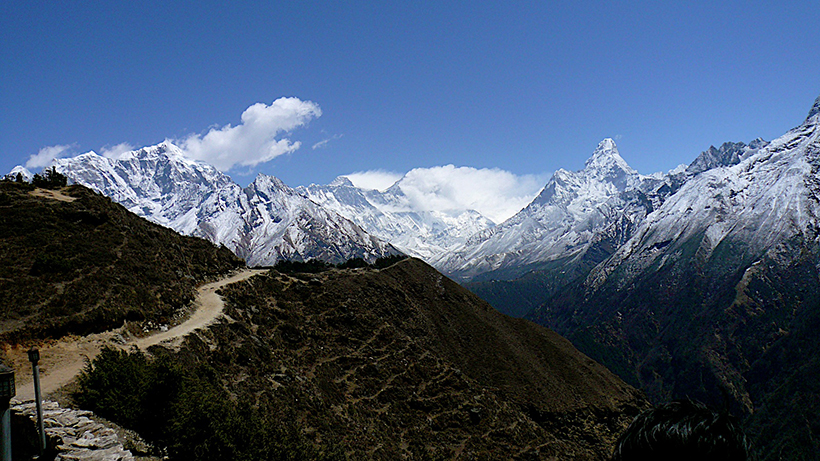
Nepal is a beautiful small land-locked country. The country is abundant with numerous snow-capped mountains and mountain ranges ranging from the east to the west. Trekking in the various regions of Nepal allows one to discover a unique culture, & tradition, experience the newness in every region, and the natural beauty in its original form.
To trek in Nepal, one needs to obtain a compulsory trekking permit. In addition to a trekking permit, one may also need to obtain other permits, depending on the region visiting and the activities one will be doing. For example, if one is planning to visit a restricted area, a national park, or a conservation area, one needs to obtain an additional Restricted Area permit or National Park or Conservation Area Permits.
Trekking permits are required for all trekking routes in Nepal, including popular routes such as the Annapurna Circuit and the Everest Base Camp Trek. The cost of a trekking permit depends on the route and the duration of the trek. The permit fees for the trekking routes in the different regions of Nepal are implemented by the Trekking Agencies’ Association of Nepal (TAAN). We have listed the essential permit fee lists of trekking routes from the east to the far western regions of Nepal.
Kanchenjunga Region:
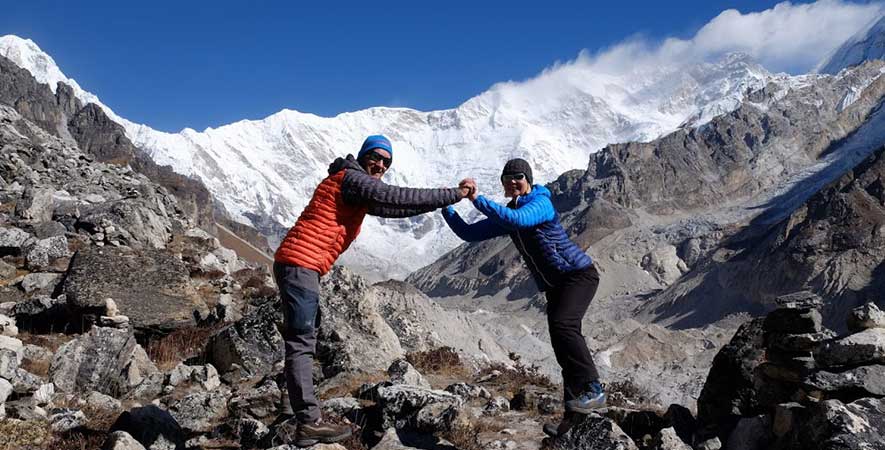
Kanchenjunga Region is popular for Kanchenjunga Circuit Trek or Kanchenjunga Base Camp trek. The essential permits are Kanchenjunga Conservation Area Permit (KCAP), and Kanchenjunga Restricted Area Permit (RAP).
Kanchenjunga RAP Fee
- USD 20 per person/week (for the first 4 weeks)
- USD 25 per person/week (beyond 4 weeks)
Kanchenjunga Conservation Area Permit (KCAP)
- Foreigners- NPR 2000/person
- SAARC- NPR 500/person
Makalu Region:
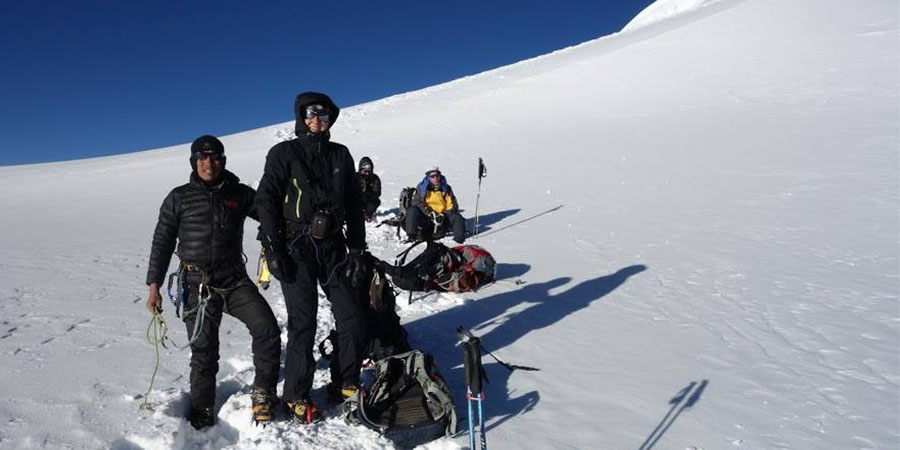
Makalu Base Camp Trek, Arun Valley Trekking, Makalu to Amphu Lapcha, Milke Danda Trek, and Arun to Hungku Valley Trek are some of the popular treks in the Makalu region. The required permits are:
Makalu Rural Municipality Permit
- NPR 2000 per person
Makalu Barun National Park
- Foreigners- NPR 3000
- SAARC- NPR 1500
Everest Region:
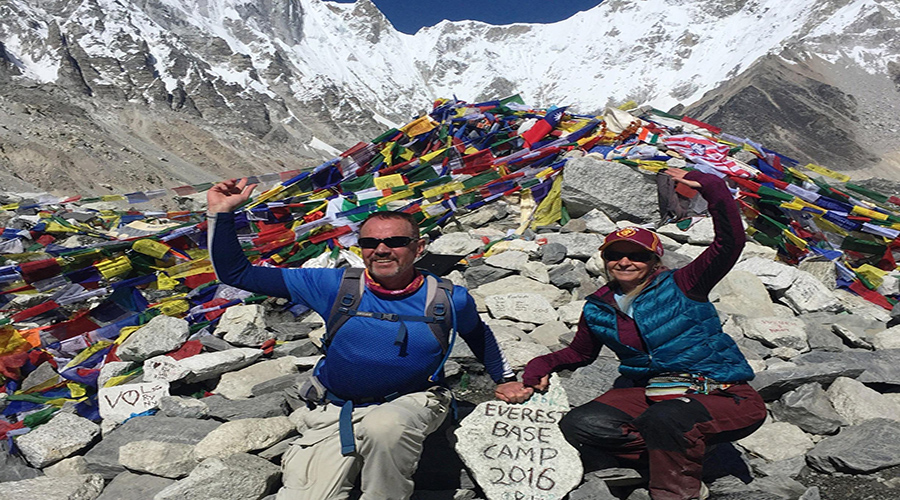
The most renowned region for trekking in Nepal is the Everest region. Everest Base Camp trek, Jiri to EBC Trek, Gokyo Lake Trek, Everest Three Pass Trek, and Everest Panorama Trek are some of the famous treks in this region. The required permits are Khumbu Rural Municipality Permit and Sagarmatha National Park (SNP).
Khumbu Rural Municipality Permit
- Foreigners- NPR 2000
- SAARC- NPR 1000
Sagarmatha National Park (SNP)
- Foreigners- NPR 3000
- SAARC- NPR 1500
Rolwaling Region:
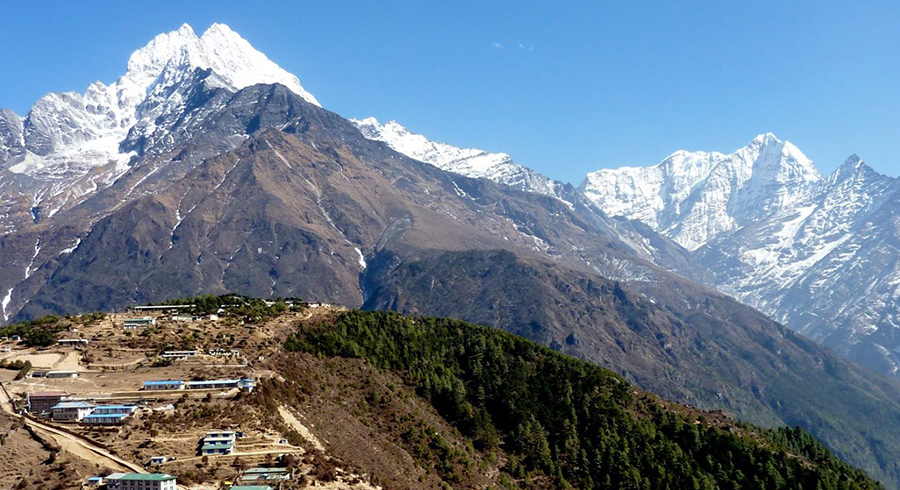
This region is adjacent to the famous Everest region. It falls under the Gaurishankar Himalaya Range. Rolwaling Region is known for its natural beauty and its diverse flora and fauna. Rolwaling Valley Trek is popular in this region. Gaurishankar Conservation Area Project (GCAP) and Rolwaling Special Permit are required permits.
Rolwaling Special Permit Fee
- USD 20 per person per week
Gaurishankar Conservation Area Project (GCAP)
- Foreigners- NPR 3000
- SAARC- NPR 1500
Langtang Region:
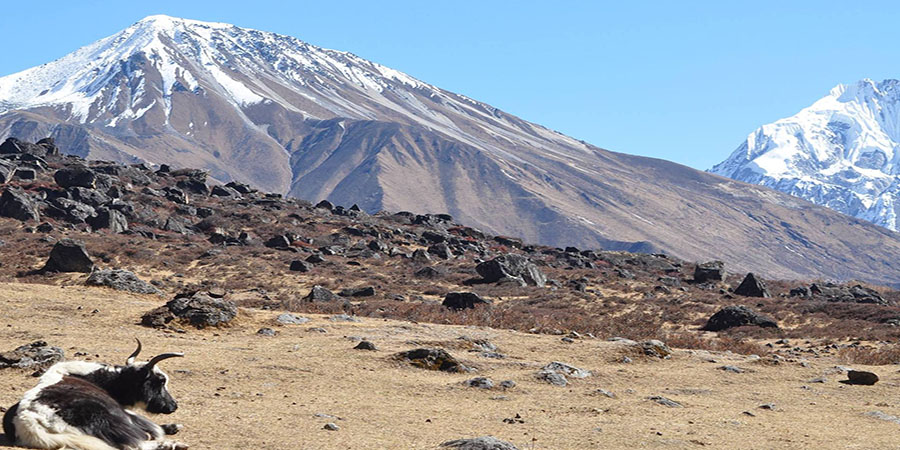
Langtang Ganja La Pass Trek, Goasaikunda Trek, Helambu Trek, Langtang Valley Trek, Tamang Heritage Trail are most popular treks in the Langtang region. We required Langtang National Park (LNP) and Trekkers Information Management System (TIMS) permits. TIMS permit is classified into three groups.
Trekkers Information Management System (TIMS)
- Green TIMS (individual trekkers) - USD 20 per person
- Blue TIMS (organized group trekkers) - USD 10 per person
- Pink TIMS (SAARC individual trekkers) - USD 6 per person
- Pink TIMS (SAARC group trekkers) - USD 3 per person
Langtang National Park (LNP)
- Foreigners- USD 30/person
- SAARC- USD 15/person
Ganesh Himal Region:
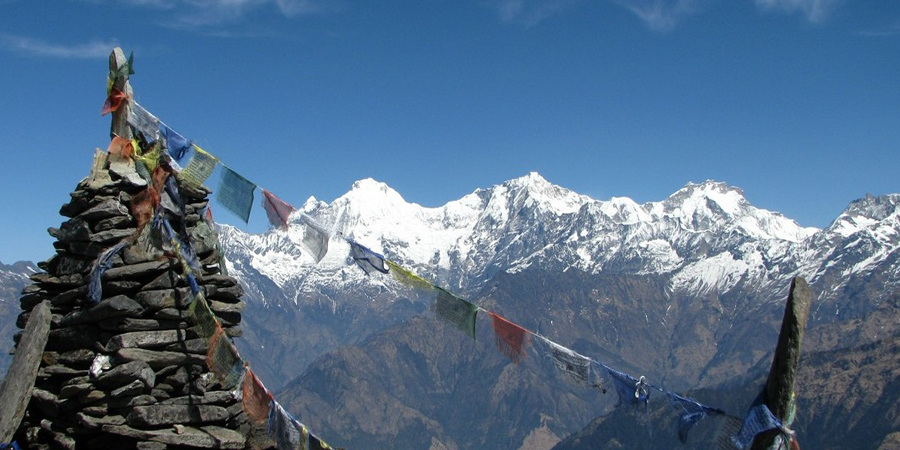
The region is situated between the Langtang National Park and Manaslu Conservation Area. The less–traveled region is a hidden gem abundant with picturesque natural beauty. Ruby Valley Trek, Ganesh Himal Base Camp Trek, Ganesh Himal Singla Pass Trek, and Paldor Base Camp Trek are popular treks in the Ganesh Himal region. We required TIMS and Langtang National Park permits.
Trekkers Information Management System (TIMS)
- Green TIMS (individual trekkers) - USD 20 per person
- Blue TIMS (organized group trekkers) - USD 10 per person
- Pink TIMS (SAARC individual trekkers) - USD 6 per person
- Pink TIMS (SAARC group trekkers) - USD 3 per person
Langtang National Park (LNP)
- Foreigners- USD 30/person
- SAARC- USD 15/person
Manaslu Region:
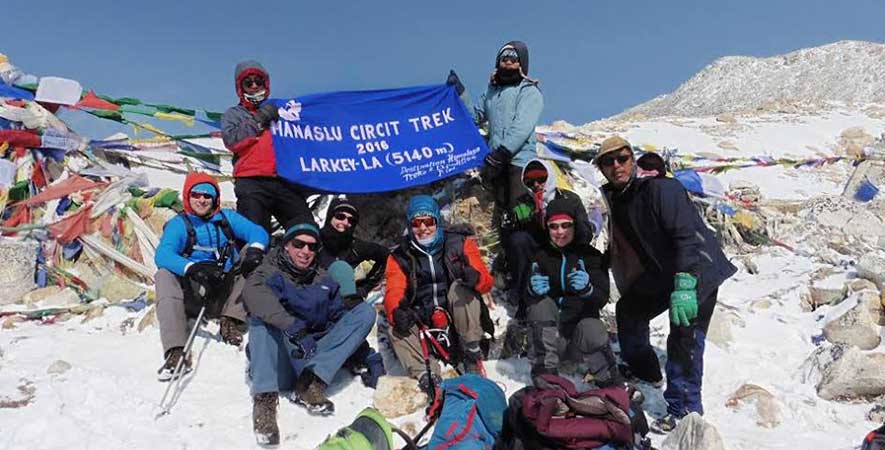
Manaslu Circuit Trek, Manaslu Two Passes Trek, & Manaslu Rupina La Pass Trek, Manaslu Tsum Valley Circuit Trek, Tsum Valley Trek are the prominent treks in the Manaslu Region. Manaslu region permits are different for different trek routes which are as follows:
- Permits for Manaslu Circuit Trek, Manaslu Two Passes Trek, & Manaslu Rupina La Pass Trek= Manaslu RAP, MCAP, & ACAP
- Permits for Manaslu Circuit Trek with Tsum Valley= Manaslu RAP, MCAP, ACAP, & Tsum Valley RAP
- Permits for Tsum Valley Trek= Tsum Valley RAP, & MCAP
The permit fees are as follows:
Manaslu Restricted Area Permit (RAP) Fee
- USD 100/week per person + USD 15/person per day (beyond a week) [Sep-Nov]
- USD 75/week per person + USD 10/person per day (beyond a week) [Dec-Aug]
Manaslu Conservation Area Permit (MCAP)
- Foreigners- USD 30/person
- SAARC- NPR 1000/person
Annapurna Conservation Area Permit (ACAP)
- Foreigners- USD 30/person
- SAARC- NPR 1000/person
Tsum Valley Restricted Area Permit (RAP) Fee
- USD 40/week per person + USD 7/person per day (beyond a week) [Sep-Nov]
- USD 30/week per person + USD 7/person per day (beyond a week) [Dec-Aug]
Annapurna Region:
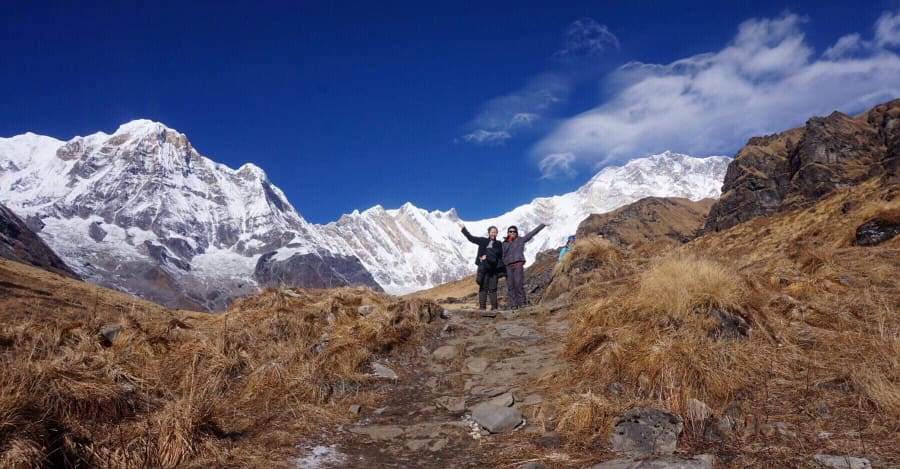
The classic and most popular trek region after the Everest region is the Annapurna region. Some of the famous treks are Annapurna Base Camp Trek, Annapurna Circuit Trek, Annapurna Sanctuary Trek, Ghorepani Poon Hill, Mardi Himal Trek, and Jomsom Muktinath Trek.
Annapurna Conservation Area Permit (ACAP)
- Foreigners- NPR 3000/person
- SAARC- NPR 1000/person
Trekkers Information Management System (TIMS)
- Foreigners- NPR 2000/person
- SAARC- NPR 600/person
Upper Mustang:
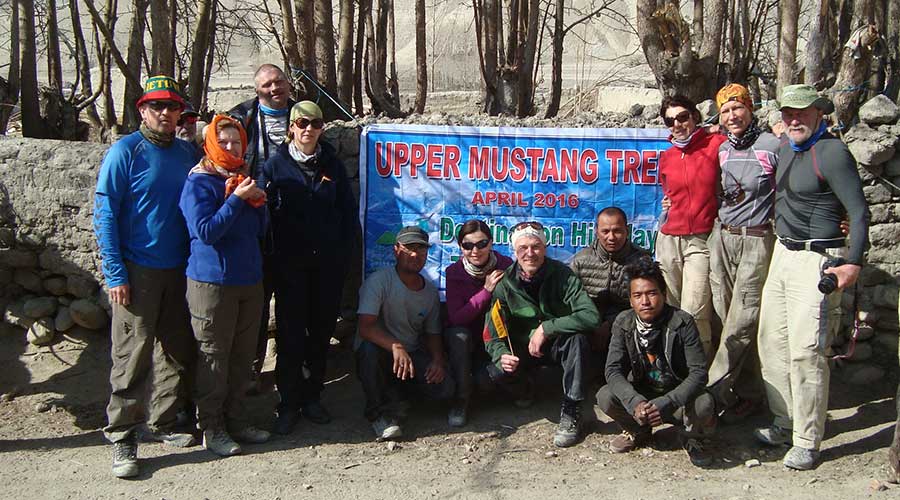
Upper Mustang also lies in the Annapurna region. The adventurous and least explored trek regions in Nepal are very impressive. We required ACAP and RAP permits.
Restricted Area Permit (RAP) Fee
- USD 500/person (10 days) + an extra USD 50 per person per day (beyond 10 days)
Annapurna Conservation Area Permit (ACAP)
- Foreigners- NPR 3000/person
- SAARC- NPR 1000/person
Manang region:
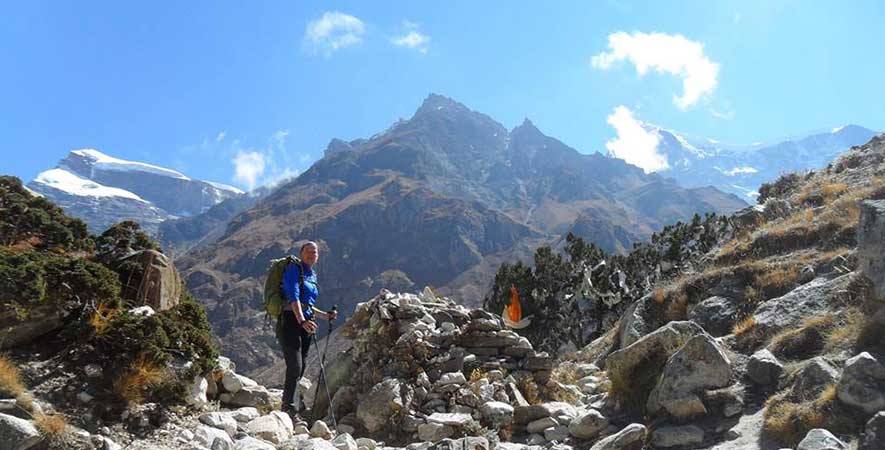
The region has some unexplored trek routes such as Nar-Phu Valley and mesmerizing Tilicho Lake Trek. Nar-Phu Valley trek requires a Restricted Area Permit and ACAP. And, Tilicho Lake Trek requires only ACAP and TIMS permits.
Nar-Phu RAP Fee
- USD 100/week per person + USD 15/person per day (beyond a week) [Sep-Nov]
- USD 75/week per person + USD 10/person per day (beyond a week) [Dec-Aug]
Annapurna Conservation Area Permit (ACAP)
- Foreigners- NPR 3000/person
- SAARC- NPR 1000/person
Trekkers Information Management System (TIMS)
- Foreigners- NPR 2000/person
- SAARC- NPR 600/person
Dhaulagiri Region:

Dhaulagiri Circuit Trek is challenging and adventurous which is in the Dhaulagiri region. This region is adjacent to the Annapurna region. Thus, the required permits are:
Annapurna Conservation Area Permit (ACAP)
- Foreigners- NPR 3000/person
- SAARC- NPR 1000/person
Trekkers Information Management System (TIMS)
- Foreigners- NPR 2000/person
- SAARC- NPR 600/person
Dolpo Region:
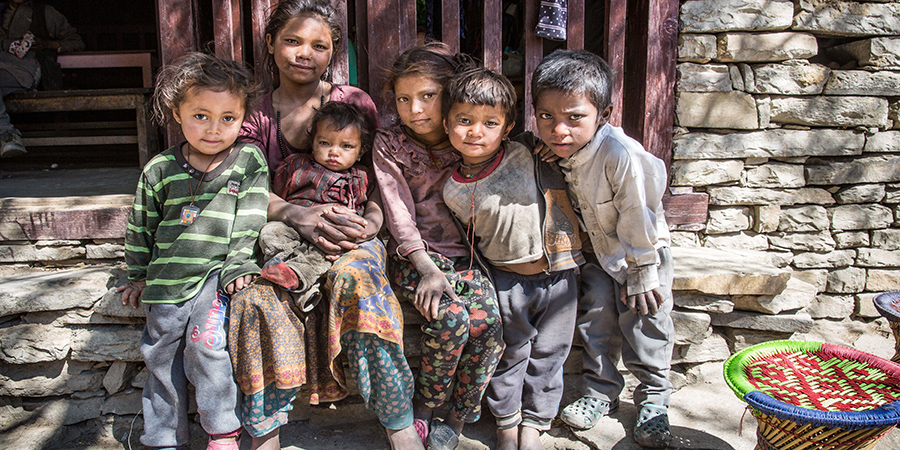
The least explored yet adventurous beautiful trek region is Dolpo. The region is rich in unique and unexplored natural beauty in its original form. Upper Dolpo and Lower Dolpo are the two main trek regions. Their required permits are:
Lower Dolpo
Shey Phoksundo National Park and Restricted Area Permits (RAP) Permits are required to trek to Lower Dolpo.
Lower Dolpo RAP Fee
- USD 20 per person per week (first 4 weeks) + USD 5 per person per week (beyond 4 weeks)
Shey Phoksundo National Park
- For all trekkers- NPR 3000
Shey Phoksundo National Park and Restricted Area Permits (RAP) for Lower Dolpo and Upper Dolpo Permits are required to trek to Upper Dolpo.
Upper Dolpo RAP Fee
- USD 500 per person (10 days) + an extra USD 50 per person per day (beyond 10 days)
Lower Dolpo RAP Fee
- USD 20 per person per week (first 4 weeks) + USD 5 per person per week (beyond 4 weeks)
Shey Phoksundo National Park
- For all trekkers- NPR 3000
Mugu Region:
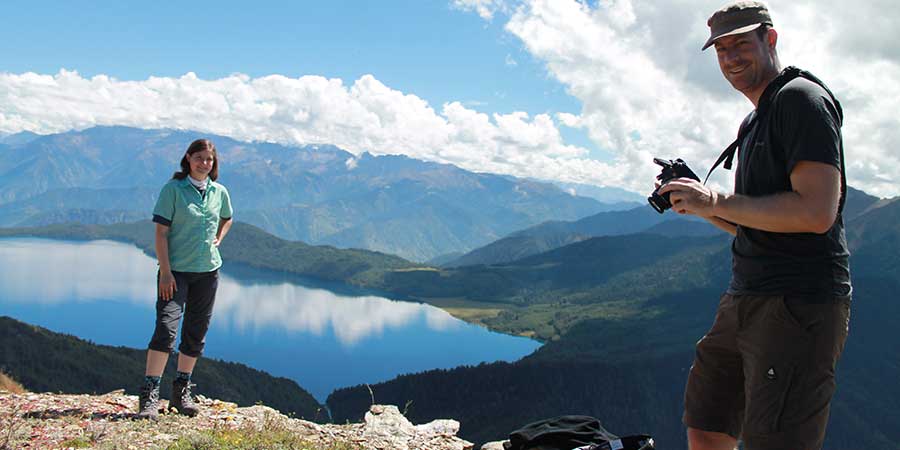
Rara Lake is the biggest freshwater lake in Nepal which lies in the Mugu region. It is well-known as Mahendra Lake. Rara Lake is very beautiful. This region is famous for the Rara Lake Trek. The required permits are:
Mugu RAP Fee
- USD 100 per person (for a week) + an additional USD 15 per person per day (after 7 days)
Rara National Park
- Foreigners- NPR 3000
- SAARC- NPR 1500
Humla Region:
One of the farthest and least developed regions of Nepal is Humla. This region is popular for its Simikot Limi Valley Trek. The valley treks allow one to explore the region in its truest form. The required permits are:
Humla RAP Fee
- USD 50 per person (7 days) + an extra USD 10 per person per day (beyond 7 days)
Humla Village Development Community
- For all trekkers- USD 10 per person
Api Nampa Valley:
The newly discovered valley is Api Nampa. It is gaining popularity for the Api Himal Base Camp Trek. One can witness the spectacular views of Api Himal, Nampa Himal, Gurans Himal Range, Saipal Himal, and many more. The required permits are:
Api Nampa valley RAP Fee
- USD 90 per person (7 days) + an extra USD 15 per person per day (beyond 7 days)
Api Nampa Conservation Area
- Foreigners- NPR 3000
- SAARC- NPR 1000
We have listed out the trekking permit fees for almost all of the trekking routes of the regions extending from the east to the far west. Still, there may be many queries regarding the permit fees besides their cost. Some possible queries are listed below:
Are the permits compulsory to trek in Nepal?
Yes, the permits are compulsory to trek in Nepal. No one is allowed to trek or carry out trekking activities without permits.
What type of Trekking permits do we require to trek in Nepal?
Mostly, the permits we require are TIMS, Municipality Trekking permits, Restricted Area Permits, and entry permits to National Parks or Conservation Areas. We may not require all mentioned permits for one single trek. It all depends on the different trek routes of the different regions of Nepal.
Where to get the Permits?
One can obtain a trekking permit through a registered trekking agency in Nepal or the Tourist Service Centre in Exhibition Road, Kathmandu, or TAAN office in Pokhara. Some trekking agencies offer trekking permit services as part of their package. It is recommended to obtain a trekking permit before one arrives in Nepal to avoid any delays.
Note: The office hours to take the permits are officially 10 am to 5 pm. Lunch break is between 1 pm-2 pm. The office remains closed on Saturdays and national holidays.
Where can I get the National Park and Conservation Area Permits?
One can get National Park and Conservation Area Permits from the Tourist Service Centre on Exhibition Road, Kathmandu. Also, one can get on the spot at the entrance of National Parks or Conservation Areas. It is the easiest way to obtain permits. Trekkers can relax and prepare for their trek as all essential permits are arranged by the travel agency.
Where can I get the Restricted Area Permits (RAP)?
One can get the Restricted Area Permits from the Tourist Service Centre in Exhibition Road, Kathmandu, or TAAN office in Pokhara. But, all of the RAP permits are arranged by the travel agency for you. So, one needs to worry about it. For trekking in Restricted Areas, solo traveling is not allowed. Thus, solo travelers can contact a travel agency to arrange a RAP permit for them. Also, one doesn’t require TIMS to trek in the Restricted Areas of Nepal. As all essential permits are looked after by the travel agency, trekkers can relax and prepare for their trek.
Do I require a guide or assistance from Travel Agency?
It is important to note that trekking in Nepal requires a high level of physical fitness and proper planning. It is recommended to hire a registered trekking agency or a guide to assist with your trek and ensure a safe and enjoyable experience. A travel agency looks after all the essential permits required for the trek. Also, for traveling to restricted areas as well as other trekking areas of Nepal, assistance from the travel agency makes it easier.
Things to Consider by Trekkers in Nepal
- Respect Local customs and Traditions
- Solo Traveling in Restricted Areas is strictly prohibited
- Trekkers are only allowed to trek in the specified routes as per the trekking permits
- Trekkers can’t change the trekking routes to trek
- Trekkers must strictly follow the guidelines issued by an official while trekking in the Restricted Areas
Who can apply for the permits? What documents are required?
Authorized travel agencies, as well as individual trekkers, can apply for trekking permits.
The following documents are required:
For Individual Trekkers:
- Your passport with a copy of the passport
- Two passport-sized photographs
- The name of the trekking route with entry & exit points
- The duration of your trek with a detailed trek itinerary
- Entry and Exit dates for Nepal
- Local Emergency Contact Number
- Home-country emergency contact number
- Travel Insurance Policy Number
For Authorized Travel Agencies:
- Online application form (trekkers) Link to Trekking Permit Application
- Passport Photocopy
- Copy of a Valid Visa (at least covering trekking days)
- Trekker’s Name List
- Detailed Trekking Program Schedule
- Guarantee letter & Agreement with Agency
- Trekking Agency’s Tax Clearance Certificate
- Both foreign nationals and Nepalese staff (accompanying the trekkers) Insurance Documents in full details
- License issued by (The Ministry of Tourism, Culture, and Civil Aviation to operate the trekking business)
- License issued by [Nepal Rastra Bank (NRB) allowing exchanging of foreign currencies]
- Registration Certificate of Permanent Account Number
- Bank Voucher payment (fees) for permits


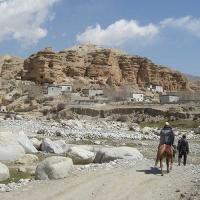
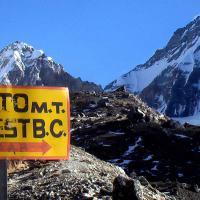
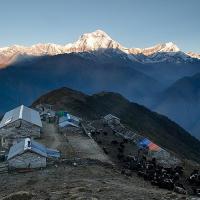
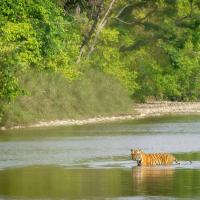
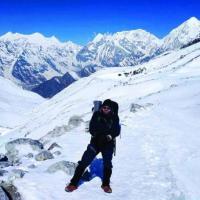
Post your comment